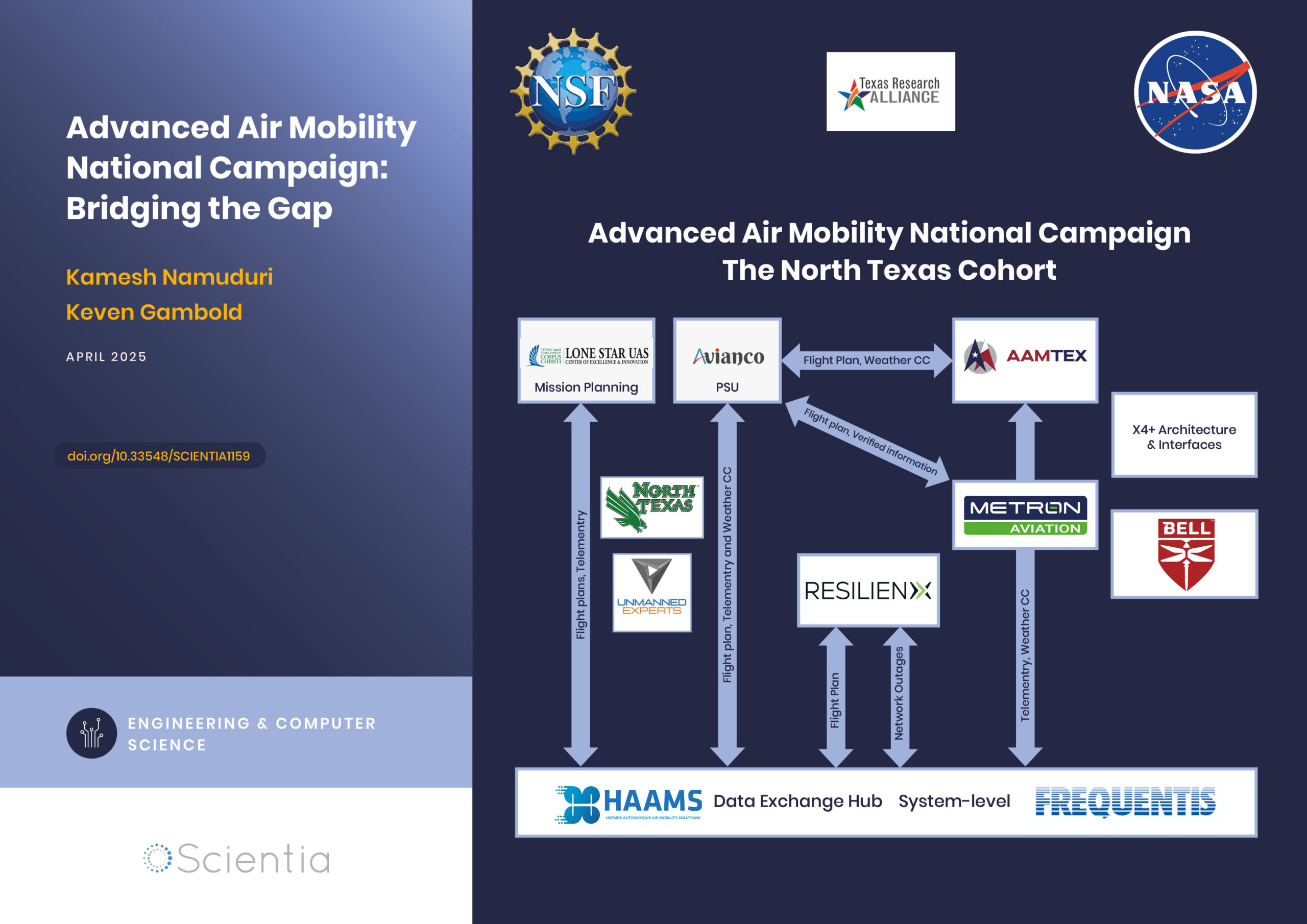Dr Hannah Gosnell – Regenerative Agriculture: Putting the Heart and Soul Back in Farming
Modern industrial agriculture has helped farmers meet rising food demands, but these practices are contributing to a range of environmental problems. Regenerative agriculture holds promising solutions that could help to restore and maintain healthy ecosystems and contribute to climate change mitigation, while keeping pace with food demands and enhancing farmers’ resilience to environmental stressors. Through her research, Dr Hannah Gosnell aims to understand what motivates cattle and sheep farmers – also known as ranchers – to adopt and sustain the use of regenerative practices and what challenges must be navigated. Her work is informing efforts that encourage farmers to transition to these methods.
Why Regenerative Agriculture?
Developments in agricultural practices over the last few decades have allowed farmers to increase their yields significantly, helping production keep up with the rising food demands of a rapidly expanding population. However, a growing body of evidence has demonstrated how these modern techniques are also contributing to environmental degradation, biodiversity loss, soil depletion, and climate change.
Deteriorating environmental health, in turn, is having serious consequences for agriculture. For instance, droughts are increasing in incidence and severity because of climate change, while depleted or degraded soils have a reduced ability to confer drought resilience to crops. To maintain yields, farmers have had to increase the amount of chemical fertiliser they use. Many weeds and insects have developed resistance to pesticides, requiring higher application rates to achieve suitable levels of control. As such, farmers are having to do more and spend more to achieve the same level of productivity each year.
A growing number of farmers are reaching a breaking point. The time is ripe for a new kind of agriculture that offers alternatives to unsustainable farming practices.
Regenerative agriculture provides the solutions we need for our future food security. Consisting of a set of ideas and practices that aim to improve soil and ecosystem health, regenerative agriculture also contributes to the wellbeing of farmers and to their communities.
The suite of regenerative practices associated with cattle and sheep farming (called ‘ranching’ in the US) includes managing grazing to allow pastures to recover and reduce bare ground, capturing and storing carbon within the soil, reducing synthetic fertiliser application to restore soil health, and making decisions that account for the natural complexity of ecological systems, often through adoption of the systems thinking associated with ‘holistic management’. These practices do not simply sustain food production methods that deplete resources, but actively aim to improve and regenerate the resources they use.
Regenerative practices help to restore resilience in agriculture by supporting functional ecosystem processes, thereby improving soil health and ‘ecosystem services’ – such as improved soil water retention, drought resistance, and natural pest control. Because regenerative agriculture focuses on whole system benefits, climate change mitigation and adaptation can be incidental to the larger enterprise and need not be the sole focus for transitioning from conventional approaches.
Additionally, regenerative practices provide a low-cost, low-tech approach to farming that replaces expensive chemical inputs and reduces labour, improving economic outcomes and reducing dependence on the agricultural chemical industry.
However, regenerative agriculture is challenging because it requires a deep understanding of ecological processes, along with the skills required to plan, monitor and move livestock more frequently to support cycles of grass regeneration, and to feed the soil microbial community. These barriers, as well as social and traditional norms, may discourage farmers from making the transition to regenerative agriculture. Understanding what motivates the farmers that have made the switch can help inform policies, incentives, outreach, and support mechanisms to encourage increased uptake of regenerative practices.
Dr Hannah Gosnell, a Professor of Geography in the College of Earth, Ocean, and Atmospheric Sciences at Oregon State University, has been investigating the human dimensions and social aspects of regenerative agriculture in her pioneering research projects. While previous research has considered the political and practical aspects of transitions to regenerative agriculture, her novel approach represents the first efforts to understand the personal factors involved.
‘The overarching challenge is understanding what worldviews, values, beliefs, and other factors influence farmer and rancher decision-making, especially as it relates to transitioning to regenerative agriculture, and how policies, institutional arrangements, outreach and engagement can support the process,’ Dr Gosnell explains.

Catalysing Transformative Change
Despite its many advantages, numerous challenges discourage farmers from adopting regenerative agriculture. For example, many lack information and experience about regenerative practices, having only been exposed to conventional methods. The cost of transitioning and the risks involved can seem insurmountable. Peer pressure, fear of stigma, and having to shift social groups can also prevent the necessary paradigm shift to higher-order systems thinking. Understanding and learning how to manage their agricultural systems regeneratively can take farmers years of dedicated effort.
Through extensive interviews with US ranchers and Australian farmers who have experienced success grazing their sheep and cattle using regenerative practices, Dr Gosnell discovered that for many early adopters of these practices, the catalyst for change came in the form of a crisis. ‘For the majority of the farmers and ranchers interviewed, the trigger which opened their mind to the possibility of a different way of managing their property was some form of personal or business crisis, be it environmental, economic, health, or psychological,’ says Dr Gosnell. ‘The crises that the farmers experienced, often a series of events, led to feelings of desperation and vulnerability which forced them to reappraise themselves and their farming practices in a critical light.’
A growing realisation that their conventional farming practices were not adequately addressing repeated and persistent difficulties enabled the farmers to work through the obstacles involved with transitioning to regenerative agriculture. However, this realisation alone was not enough. It was not until an alternative vision of agriculture was presented to them that the transformation could begin. For many of the farmers interviewed, exposure to regenerative practices – for example during a public talk or during conversations with their peers – produced a moment of epiphany, prompting radical changes in thinking and behaviour.
Dr Gosnell discovered that for many of the farmers she interviewed, negative experiences with agricultural chemicals – such as rising costs and declining efficacy – was the crisis that compelled them to consider other methods of producing food and fibre. Conversely, learning about how organic fertilisers – such as compost – benefit soil microbes, and thereby contribute to improved plant health, higher yields, and enhanced drought resilience, was exciting to farmers and allowed them to shift from thinking about soil as a ‘chemical reservoir’ to viewing it as a biological system in its own right.
Learning about ecosystem function and how regenerative practices can work with these natural processes allows farmers to ‘see’ the land differently. This demonstrates the important role that cognitive factors play in transformation. Dr Gosnell notes that this change in the way farmers view their land results in ‘new mental models, attitudes, beliefs, and ultimately, behavioural change.’ For most of them, switching to regenerative practices brought their farming into alignment with their personal ethics and values, offering them greater personal fulfilment. As one interviewed farmer said of conventional agriculture: ‘That whole philosophy of trying to kill things that want to grow and trying to grow things that want to die, it’s incredibly soul destroying and costly.’
Becoming more in touch with the life on their land can also positively affect farmers’ emotions and sense of wellbeing, leading to self-amplifying positive feedbacks that help sustain behavioural changes. In other words, seeing positive results on the land associated with regenerative agriculture helps farmers feel happier, and so they want to keep doing it and learning more. This also illustrates how agricultural landscapes can be thought of as social-ecological systems, where positive results in social or ecological realms often lead to positive gains in the other.

Translating the Results into Motivators
Obstacles preventing farmers from transitioning to regenerative agriculture exist in political, practical, and personal spheres. Dr Gosnell’s work demonstrates that measures to increase uptake of regenerative practices must address all three spheres to be successful.
Some efforts to scale up regenerative agriculture have focused on expanding markets for regeneratively raised products so as to provide consumers with the option to ‘vote with their forks’. However, this strategy may not be as effective as some believe, since it does not address the challenges on the supply side. Because of the role that personal and social factors play in the decision to switch to regenerative agriculture, Dr Gosnell and her co-authors suggest that measures targeting the supply-side are necessary.
Financial incentives to adopt regenerative practices implemented by a growing number of governments – such as payments for carbon capture – offer a strategy that focuses on the supply-side. But although these are beneficial for easing the transition to sustainable practices, Dr Gosnell’s work suggests that they do not provide enough motivation by themselves. Ranchers who generated carbon credits through the US Chicago Climate Exchange, for example, reported that the costs of transitioning – time, labour, and financial – far outweighed the payments they received for captured carbon. Their motivation for adopting regenerative agriculture, and therefore climate-smart practices, preceded and transcended the incentives provided.
Providing opportunities for farmers to experience alternative ways of producing food and fiber can help them to overcome barriers to transition, for example, increasing access to social and peer networks, microscope clubs to explore soil and soil microbes, and outreach and demonstrations. Dr Gosnell’s findings demonstrate how educators, consultants, and mentors can facilitate ‘induced epiphanies’ by providing the alternative vision of agriculture to farmers unsatisfied with their current practices. She suggests that governments should develop and support programs that more effectively engage farmers in the personal sphere, such as peer-to-peer learning programmes. The opportunity to engage with like-minded peers while exploring regenerative agriculture facilitates the emergence and solidification of new farmer identities and promotes the development of new cultural norms.
Farmers transitioning to regenerative agriculture, and especially those that have been trained in holistic management and holistic decision-making, typically demonstrate a cognitive shift to systems thinking, a willingness to consider even radically alternative ways of thinking and practice, a willingness to learn, and enhanced knowledge and observation of ecosystem processes associated with soil and pasture health.
Dr Gosnell’s extensive research provides convincing evidence that to promote the magnitude of change necessary for an agricultural revolution, we must remember that farmers are people – with their own thoughts, values, beliefs, and social environment. The right strategies and incentives are critical for promoting the widespread uptake and continued use of regenerative practices.
Our future environmental, economic, and societal well-being hinges on the decisions we make today. Since a vast proportion of available land globally is used for livestock production and growing crops, the positive impacts that a large-scale transition to regenerative agriculture could have for biodiversity, overall environmental health, and climate change mitigation could quite literally change the world.
Reference
https://doi.org/10.33548/SCIENTIA606
Meet the researcher

Dr Hannah Gosnell
College of Earth, Ocean, and Atmospheric Sciences
Oregon State University
Corvallis, OR
USA
Dr Hannah Gosnell earned her PhD in the Department of Geography at the University of Colorado, Boulder, before continuing her research career at CU’s Center of the American West. She currently holds the position of Professor of Geography in the College of Earth, Ocean, and Atmospheric Sciences at Oregon State University, and is also affiliated with the Australian Centre for Culture, Environment, Society and Space at the University of Wollongong, Australia; and the Centre for Sustainability at the University of Otago, New Zealand. Dr Gosnell’s research interests include agricultural landscape change, water resource management, climate change and environmental governance in the context of rural working landscapes. She has also contributed her time and expertise in numerous roles at the American Association of Geographers, including being elected as Chair of the Human Dimensions of Global Change Specialty Group and the Rural Geography Specialty Group.
CONTACT
E: gosnellh@geo.oregonstate.edu
W: http://ceoas.oregonstate.edu/profile/gosnell/
W: http://blogs.oregonstate.edu/hannahgosnell/
KEY COLLABORATORS
Susan Charnley, Research Social Scientist, U.S. Forest Service Pacific Northwest Research Station, Portland, OR
Nicholas Gill, Associate Professor, School of Geography and Sustainable Communities, University of Wollongong, Australia
Bruce Goldstein, Associate Professor, Environmental Studies Program, University of Colorado, Boulder, CO
Kerry Grimm, Senior Lecturer, School of Earth and Sustainability, Northern Arizona University, Flagstaff, AZ
Julia Haggerty, Associate Professor of Geography, Montana State University, Bozeman, MT
Paige Stanley, PhD Candidate, Department of Environmental Science, Policy and Management, University of California, Berkeley, CA
FUNDING
US Forest Service, Pacific Northwest Research Station
US Department of Agriculture, Northwest Climate Hub
US National Science Foundation
FURTHER READING
H Gosnell, Regenerating soil, regenerating soul: An integral approach to understanding agricultural transformation, Sustainability Science, forthcoming.
H Gosnell, S Charnley, P Stanley, Climate change mitigation as a co-benefit of regenerative ranching: Insights from Australia and the United States, The Royal Society Interface Focus, 2020, 10, 20200027.
H Gosnell, K Grimm, BE Goldstein, A half century of Holistic Management: What does the evidence reveal?, Agriculture and Human Values, 2020, 37, 849.
H Gosnell, N Gill, M Voyer, Transformational adaptation on the farm: Processes of change and persistence in transitions to “climate-smart” regenerative agriculture, Global Environmental Change, 2019, 59, 101965.

Want to republish our articles?
We encourage all formats of sharing and republishing of our articles. Whether you want to host on your website, publication or blog, we welcome this. Find out more
Creative Commons Licence
(CC BY 4.0)
This work is licensed under a Creative Commons Attribution 4.0 International License. 
What does this mean?
Share: You can copy and redistribute the material in any medium or format
Adapt: You can change, and build upon the material for any purpose, even commercially.
Credit: You must give appropriate credit, provide a link to the license, and indicate if changes were made.
More articles you may like
International Isocyanate Institute | TDI-induced Asthma: Reanalysing Data to Find Hidden Trends
Even if you’ve never heard of them, you’ve used polyurethanes. Producing them requires toluene diisocyanates, which may/can induce asthma when inhaled. A 5-year study claimed to conclude that cumulative TDI exposure over time was indicative of asthma incidence. However, a reanalysis by a team at the International Isocyanate Institute points the finger instead at the frequency of unprotected high-exposure events, like accidental spills or plant maintenance. This finding guides the way for future advances in worker safety.
A New Way to Detect and Identify Forensic Bloodstains
Accurately identifying bodily fluids at crime scenes is vital to aid forensic examinations and obtain information for use in criminal proceedings. However, collecting viable material for analysis can be challenging, especially if samples are difficult to access or the amount is minute. Dr Lamyaa Almehmadi and Professor Igor K Lednev at the University at Albany, State University of New York, USA, have introduced a new technique to assist in analysing bloodstains for forensic examination without compromising sample integrity.
Advanced Air Mobility National Campaign: Bridging the Gap
The rapid advancements in technology have paved the way for revolutionary changes in transportation, particularly air mobility. One such groundbreaking initiative is the Advanced Air Mobility (AAM) National Campaign led by NASA. This campaign aims to integrate advanced air mobility solutions into the existing transportation infrastructure, creating a seamless, efficient, and safe urban air transportation system. By addressing the various challenges associated with urban air mobility, the AAM National Campaign is poised to redefine how we navigate our cities, ultimately leading to reduced congestion, improved accessibility, and enhanced environmental sustainability.
Dr Niloofar Vardian | Mapping the Unknown: Inside Black Holes
Dr Niloofar Vardian at the SISSA school has advanced our understanding of black hole interiors through precise mathematical modelling. Her recent publication sheds light on previously inaccessible aspects of black hole dynamics, deepening our knowledge of these mysterious and difficult-to-study phenomena.




